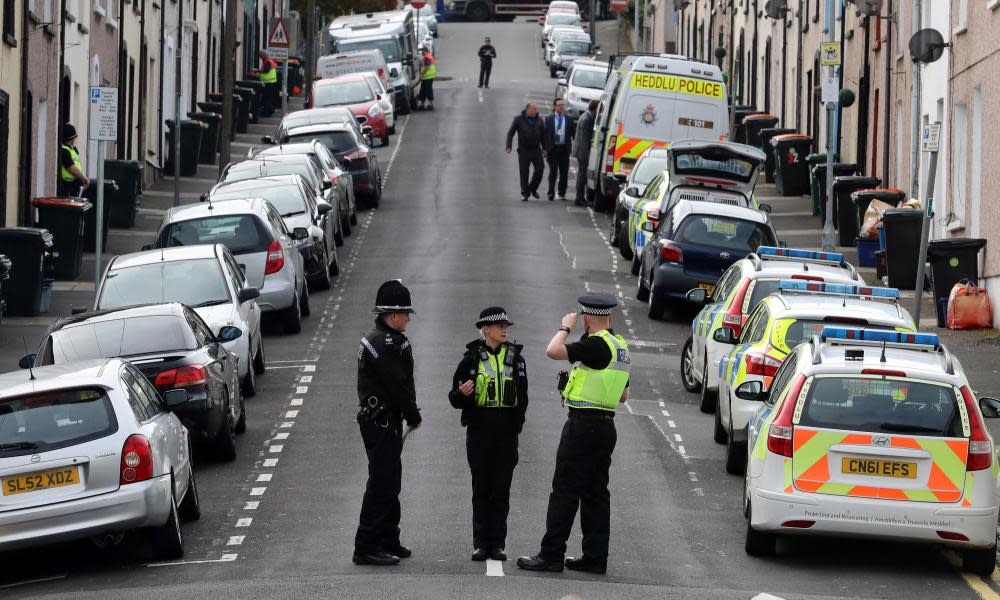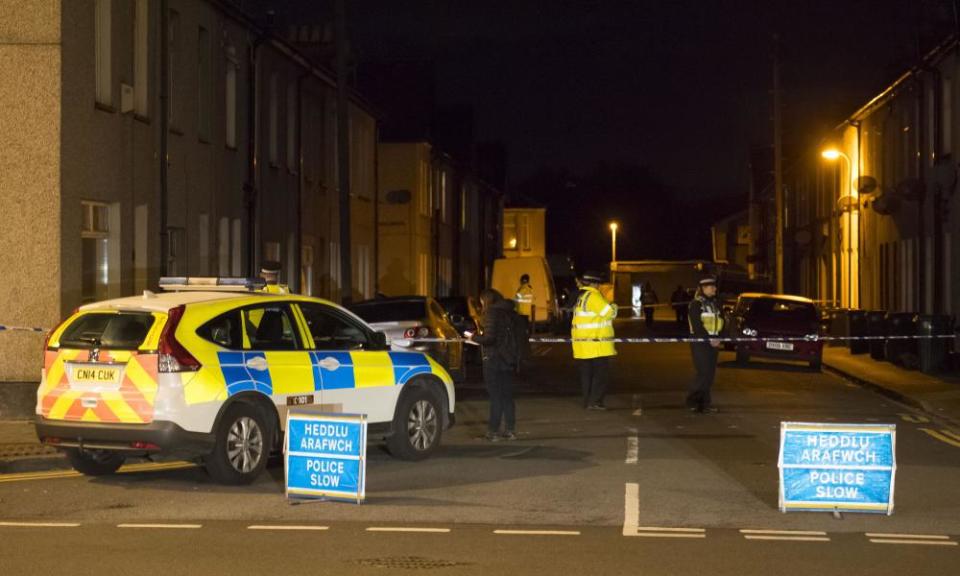London tube bombing arrests: five now held

Police investigating the attempted bombing of a London tube train last Friday have made a sixth arrest.
A 17-year-old boy was arrested under the Terrorism Act shortly after midnight on Thursday morning in Thornton Heath, south London, the Metropolitan police said. His home has been cordoned off as police search the property.
17-year-old male was arrested in Thornton Heath at 00:05 in connection with #ParsonsGreen attack - police have sealed off this property pic.twitter.com/sNUcQat1Z1
— Dan Whitehead (@danwnews) September 21, 2017
The latest raid came after a a 25-year-old was arrested in a Newport street on Tuesday night, and two other men, aged 30 and 48, were detained on Wednesday following a pre-dawn raid on a house in the city.
Detectives in London continued to question Yahyah Farroukh, a Syrian student, aged 21, who was arrested in west London on Saturday night, and an 18-year-old detained in Dover as he attempted to board a ferry to France on Saturday morning.
All of the five men, and the 17-year-old boy were being detained at a police station in south London, Scotland Yard said.
Speaking after the south Wales arrests, Commander Dean Haydon, head of Scotland Yard’s counter-terrorism command, said: “This continues to be a fast-moving investigation. A significant amount of activity has taken place since the attack on Friday. We now have five men in custody and searches are continuing at four addresses.”
A witness to the arrest on Tuesday night described how policepicked up the suspect as he walked along the street.
Sully Ali, 19, who lives nearby, said: “A big van pulled up and six officers got out and jumped this guy. There were two armed officers there, they didn’t have their guns pointed at him but they had them on show. The guy was smiling. I didn’t hear him saying anything or the police saying anything to him.” He said he recognised the arresting officers as Metropolitan police. The suspect was arrested and handcuffed by plain clothes officers, he said.
Residents said the arrested man had lived in the area for many years; he had worked as a painter and decorator, and attended local mosques. “He was a nice guy, everybody knew him,” one man said. “He was a student here and he worked as a painter and decorator.”
One woman said: “He did some painting on our house about two years ago. He was a nice guy, he was very softly spoken. He used to condemn terrorism in front of my husband – my husband would condemn terrorism and he would agree with him. I know he is a Muslim but I don’t know what mosque he went to. Muslims in this area are totally shocked, we condemn terrorism totally and we totally condemn what happened in London.”

Shortly after the arrest, police sealed off Jeffrey Street on the east side of the city and began to search a terrace house in the street.
Neighbours said the occupant was a devout Muslim who prayed several times a day. They described him as quiet and friendly.
Abid Ali, a shopkeeper with a store in the street, said: “He was a neighbour and a customer. He called in and always had a chat. He’d lived next to us for a couple of years but he came originally from Iraq about five years ago. He’s a hard-working guy. It was a real shock to us all when he was arrested. We don’t know anything about what he was meant to be doing. He lived in the house with a couple of friends and there was always a lot of coming and going. But it was just normal to us. He didn’t seem like an extremist or anything like that.”
Neighbours who saw the raid a few hours later on the house in West Street, on the other side of the River Usk and close to the city centre, said they saw a man being led out in handcuffs a short while later.
One said: “It was crazy, there were loads of police cars here and they all arrived at the same time. About 15 officers went into the house. The first guy was taken out in handcuffs; he was wearing a blue hoodie and covering his face. Officers have been coming out with bags ever since.”
Neighbours there said the property housed asylum seekers. They said there were about five men of “Middle Eastern appearance” living there. One neighbour said: “Five of them lived there. All men. They were friendly. Two of the guys moved in recently.”
In December 2015, Siful Haque Sujan, a Bangladeshi man who had run a computer business in Newport, was killed in a US drone strike in Syria. The Pentagon said he had been a senior figure in Islamic State.
Three months earlier Reyaad Khan, 21, from Cardiff, 14 miles to the west, had been killed in an RAF drone strike. Two brothers from Cardiff, Aseel and Nasser Muthana, went to join Isis.
Mohammad Asghar, a Welsh assembly member, said the arrests had frightened residents. “Radicalisation is a growing problem in Wales, but it is reassuring that our intelligence services are able to act so quickly to apprehend suspects. Whilst we mustn’t jump to any conclusions, we need to have an open and honest conversation about radicalisation in our communities. The law cannot take the place of familial and community responsibility, but our governments have a duty to take the action necessary to protect its citizens.”
The first two men to be arrested following the tube train attack had both been cared for by the foster parents Pauline and Ronald Jones, aged 71 and 88, at a property in Sunbury on Thames, Surrey.
At about 6.50am on Friday CCTV captured images of a man carrying a Lidl supermarket bag in the street next to the Jones’ home. Ninety minutes later a bomb built inside a plastic bucket and placed inside a Lidl bag partly detonated on a District Line carriage shortly after the train pulled into Parsons Green station, west London.
The train was packed with commuters and schoolchildren. Thirty people were injured. Some suffered flash burns and others had minor injuries as people trampled over others to try to escape.
Bomb disposal experts said that photographs of the smouldering remains of the bomb showed that the initiating charge had exploded but had failed to detonate the main charge.

 Yahoo News
Yahoo News 
